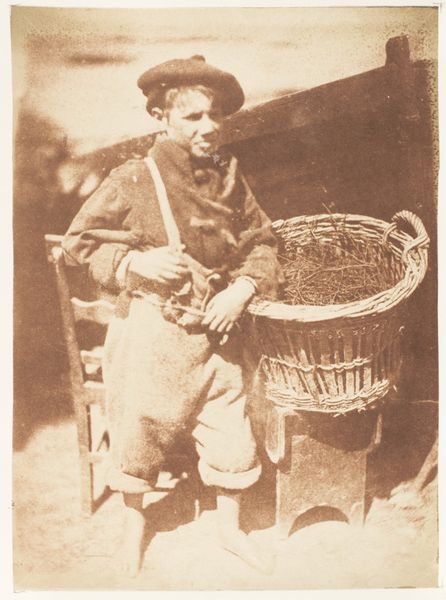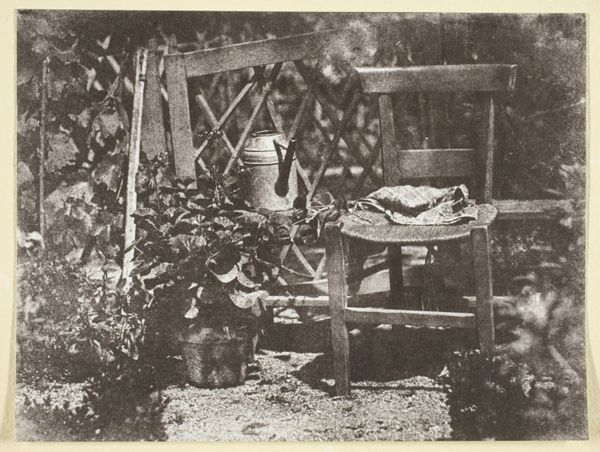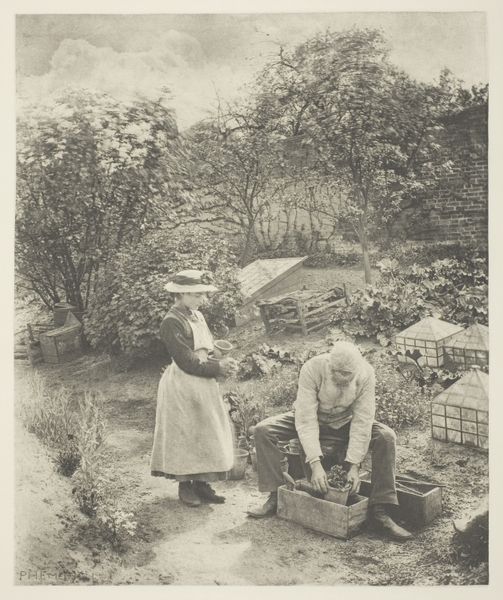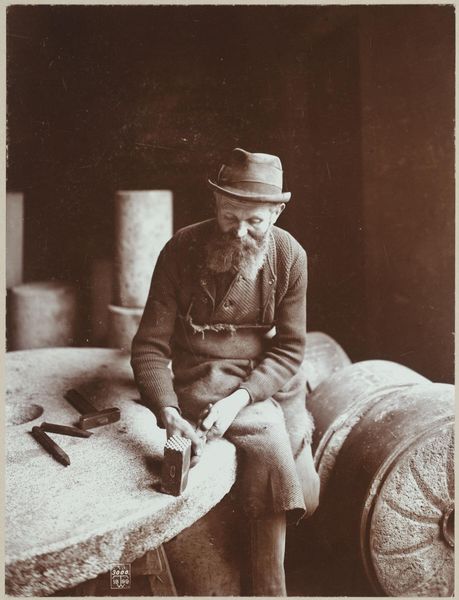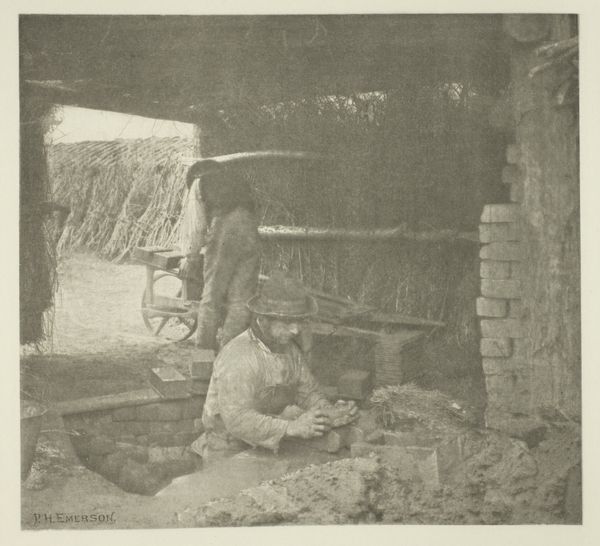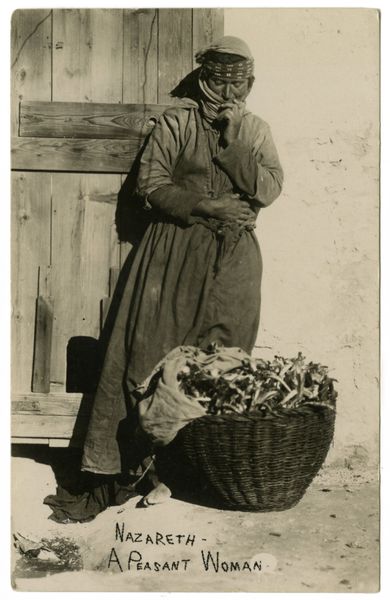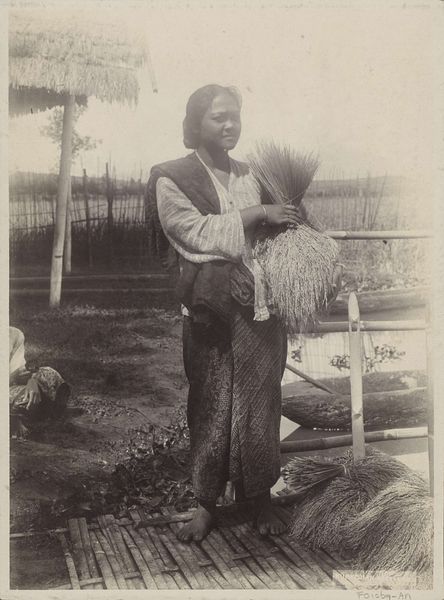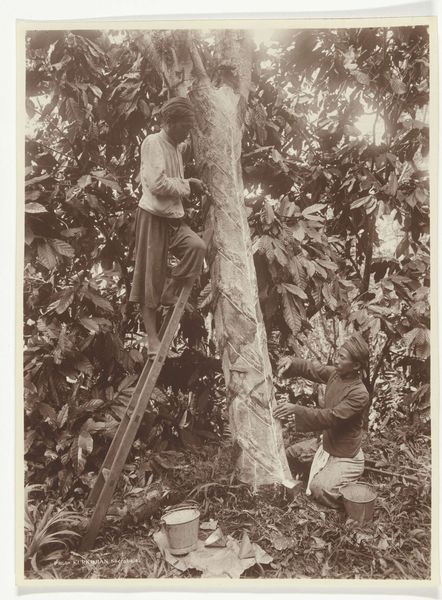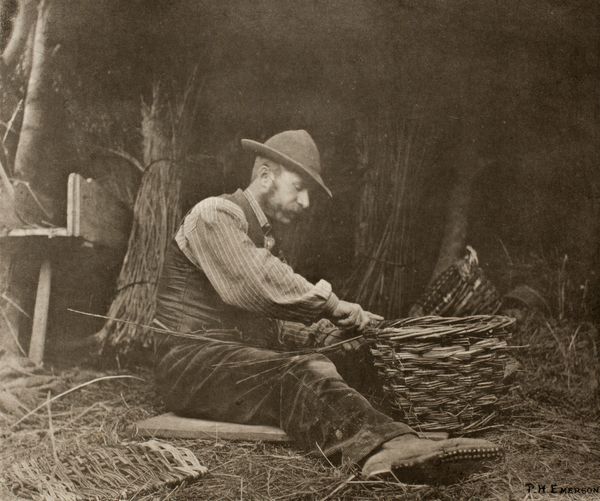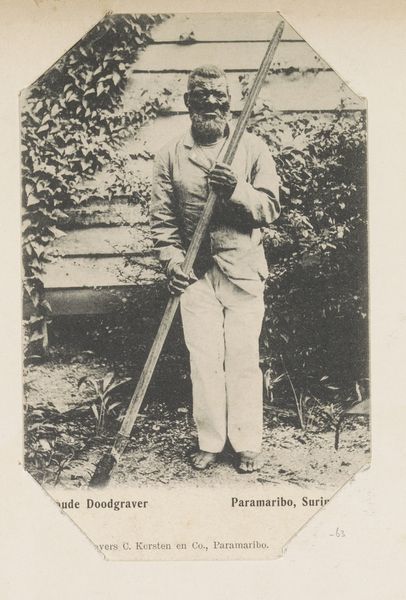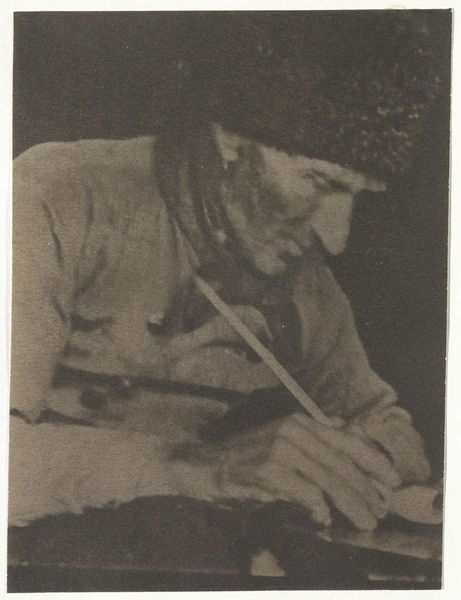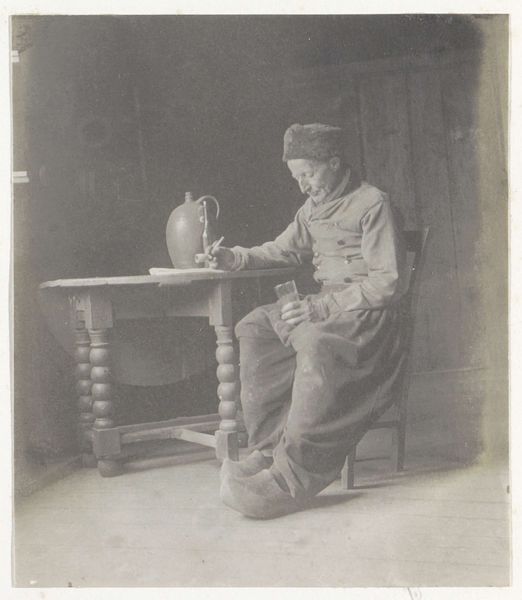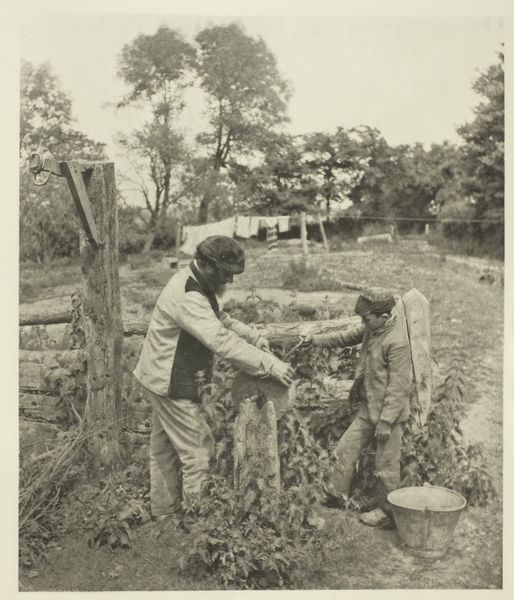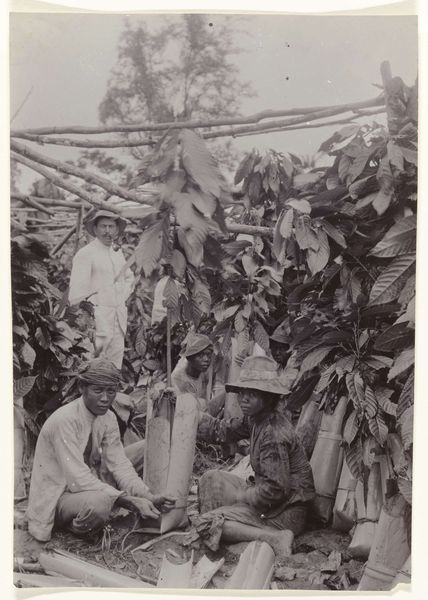
paper, photography, gelatin-silver-print
#
portrait
#
16_19th-century
#
landscape
#
paper
#
archive photography
#
photography
#
historical photography
#
gelatin-silver-print
#
france
Dimensions: 17.4 × 22.5 cm (image/paper/mount)
Copyright: Public Domain
Curator: Standing before us is Hippolyte Bayard's gelatin-silver print, "Bayard Jardinier," dating from around 1845 to 1865. A seemingly humble scene. Editor: It has an understated poignancy. The man's weary posture contrasts with the vitality of the garden—it almost reads as an allegory. Curator: Bayard was a pioneer of photography in France. Interestingly, he deliberately staged and constructed scenes. Think of it almost as tableaux. Here, we see what seems to be a gardener—likely Bayard himself—seated amidst his work. Notice how the photograph captures the patina of age. Editor: The composition, too, strikes me. The figure isn’t centered; instead, he's pushed to the left, almost yielding space to the overgrown plants behind him. The watering can on which he sits creates a compositional balance, anchoring him to the earth. The plants act almost like the frame to an idealized landscape—Nature taking back her territory. Curator: Bayard's image participates in a wider tradition of associating photography with truthfulness. This scene echoes symbolic portrayals of labor and connection to the land—reminding us of humanity's bond with nature, but with this added dimension that early photographs hold truth. What is particularly poignant is the gesture; the man meticulously stripping thorns from stalks suggests refinement or a type of cultivation on multiple levels. Editor: Indeed. We read his act as more than practical. The repetitive motion shown through composition makes him both Sisyphus and cultivator. This photograph transforms what appears initially as merely utilitarian objects—watering cans and pots—into an arena ripe with deeper philosophical questions. Curator: Early photographs such as Bayard's provided new possibilities. In terms of iconography, these images have a relationship with historical depictions of the dignity of labor and of working the land. The work transforms both land and soul. Editor: So, even in what may seem a simple depiction of labor, Bayard's photograph provides us space for reflections about purpose. There is also much emphasis placed upon this "primitive" act. This adds to the overall feeling of nostalgic reverie. Curator: Yes, even through its unassuming setting, the work gives weight to our perception of place. We glimpse not only a portrait, but an unfolding history etched into both the print and the very act represented. Editor: In conclusion, what could initially appear as a muted composition shows off the potential for early photography, transforming labor, portraiture, and our interaction with reality.
Comments
No comments
Be the first to comment and join the conversation on the ultimate creative platform.
